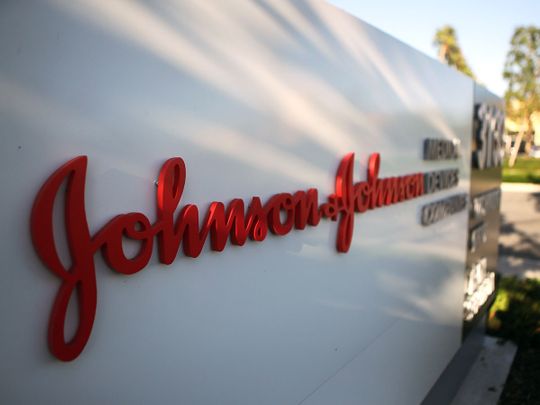
Washington: The US pharmaceutical industry faces tens of billions of dollars in potential damage payments for fueling the opioid addiction crisis after Oklahoma won a $572 million (Dh2.1 billion) judgment against drugmaker Johnson & Johnson.
Fellow opioid producer Purdue Pharma reported to have offered $10-12b to settle lawsuitsOne day after the healthcare giant was found guilty of flooding the market with highly addictive painkillers, another top opioid producer, Purdue Pharma, was reported to have offered $10-12 billion to settle more lawsuits before they come to trial.
Dozens more companies in the US prescription drugs chain — giants like Teva Pharmaceuticals, Allergan, Mallinckrodt, Walmart, CVS and Walgreens Boots — could face similarly large payouts as the next major opioids case gears up in Ohio.
Nearly 2,300 lawsuits similar to Oklahoma’s have been rolled into one trial to begin in October.
The states, cities, towns and Native American tribes who filed the suits are demanding huge sums to pay for the fallout of the crisis — overwhelmed health and social systems, families unable to care for themselves, and babies born addicted to the drugs.
$453 billion damage estimate
The case has drawn comparison to the $206 billion the tobacco industry agreed to pay 46 states in 1998 for the consequences of decades of nicotine addiction.
In the consolidated Ohio case, one estimate submitted to the court puts the total costs that communities face due to the epidemic at $453 billion over the coming decade.
In the Oklahoma case, Judge Thad Balkman said the $572 million would cover estimates of just one year of “abatement,” or mitigation efforts related to the rash of addiction and overdose deaths the state has experienced.
Balkman said J&J’s aggressive promotion of prescription painkillers, downplaying and hiding the high addiction risks, “compromised the health and safety of thousands of Oklahomans.”
That was a clear message for the companies accused of doing the same in the Ohio case.
Purdue, which settled out of court early on in the Oklahoma case for $270 million, confirmed Tuesday it was in talks to avoid going to trial in Ohio as well.
“While Purdue Pharma is prepared to defend itself vigorously in the opioid litigation, the company has made clear that it sees little good coming from years of wasteful litigation and appeals,” the company said in a statement.
The company, whose Oxycontin painkiller became an emblem of the addiction epidemic, and whose wealthy owners the Sackler family have come under international scorn, would not confirm or deny the media reports that it had offered up to $12 billion to resolve its liability.
However, it said, “The people and communities affected by the opioid crisis need help now.”
“Purdue believes a constructive global resolution is the best path forward, and the company is actively working with the state attorneys general and other plaintiffs to achieve this outcome.”
Millions addicted
The cases seek to address the costs of millions of Americans sinking into addiction after using potent opioid painkillers that the companies churned out and doctors freely, and often criminally, prescribed over the past two decades.
Well over 400,000 people died of opioid overdoses in that period, while the companies involved raked in billions of dollars in profits.
And while the flood of prescription opioids into the black market has now been curtailed, addicts are turning to heroin and highly potent fentanyl, where the risk of overdose and death is even higher.
Even so, the lawsuits are complex and legally challenging.
The producers, wholesale distributors and pharmacies that liberally distributed the prescription painkillers argue they acted legally in a highly regulated industry, and say the fault lies mainly in doctors over-prescribing the drugs.
The Oklahoma and Ohio suits depend on evidence showing the drug industry knew the risks and covered them up, encouraging overprescription to make more money.
Both suits rely on “public nuisance” laws that are rarely used in such a case, and J&J says it will appeal Monday’s judgment based in part on the over-expansive use of the statute.
But University of Georgia law professor Elizabeth Burch said the Oklahoma case brought out evidence about the drug companies’ behavior that had not been seen before — evidence that could hurt the defendants in the Ohio trial.
“Some of Judge Balkman’s key findings will certainly play a role in future cases, but it’s the evidence itself, not his ruling that will be on display,” she said.
“I think it will have an effect on all the district litigations in Ohio because defendants will see they could be held liable,” said University of Richmond law professor Carl Tobias.
“I think some defendants are going to have to think twice about going to trial,” he said.












